The best kind of garden doesn’t just look beautiful, it also provides you with fresh fruits, vegetables, and herbs. Even for the occasional cook, little is more satisfying than creating a dish with fresh produce from the garden.
Herbs are an easy way to freshen up the dinner plate. A sprig of rosemary adds flavor to roast potatoes. Freshly picked cilantro makes your salsa pop. And a handful of mint leaves can make for a quick cup of refreshing tea.
No herb garden is complete without a variety of mint. Due to the similarities of the different species, it can be hard to figure out which one you have growing in your garden. Often, the easiest way to differentiate the species is by the look of their flowers. For that reason, below you will find how a couple of the popular varieties look like.
You may also be interested in our guide about the best time of the year to plant bushes to help them get off to a head start.
Mint plants are often considered to be invasive. If left unchecked, they can spread rapidly and steal nutrients and root space from other plants. They grow in both sunny areas and partial shade with good soil drainage. And even if you prune the blossoms as they appear, this species can propagate via its roots and runners. Thus, it can be hard to confine the plant to one part of your garden.
If you want to enjoy the fresh flavors of your mint while preventing it from invading your garden, keep reading.
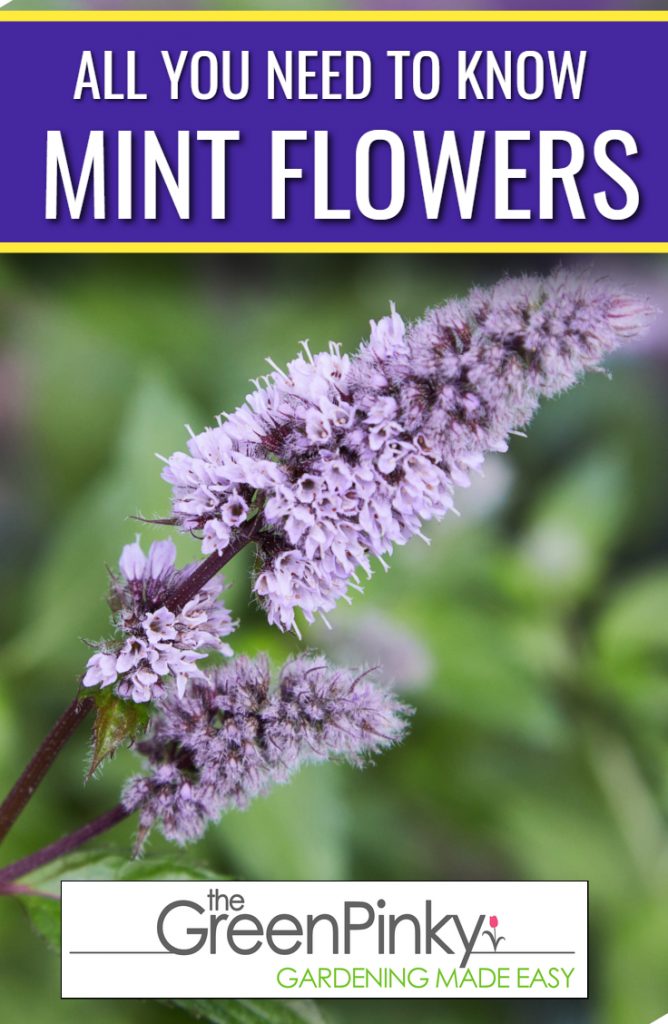
Varieties
There are about 20 species in the genus Mentha. Some of the most popular varieties include spearmint, peppermint, and apple mint. They all share many of the same characteristics, such as beautiful dark-green leaves that are a bit fuzzy and thick and fast-spreading roots called rhizomes. These three types are the easiest to differentiate by the look of their flowers.

Spearmint
Spearmint (Mentha spicata) flowers in the summer, blooming from July to September in the northern hemisphere. Spearmint flowers grow in spikes or stalks, with each bloom being pink or white in color. The flowers of M. spicata produce seeds that measure just under 1 mm, which is relatively large for such a plant.

Peppermint
Peppermint (Mentha piperita) produces blossoms from the middle of summer until fall. The purple flowers of M. piperita are about ¼ inch long and form around a thick spike that protrudes from the stem. Peppermint is a hybrid species and, therefore, unable to produce healthy, viable seeds. Any offspring will likely be a poor-quality plant that you definitely do not want in your garden.
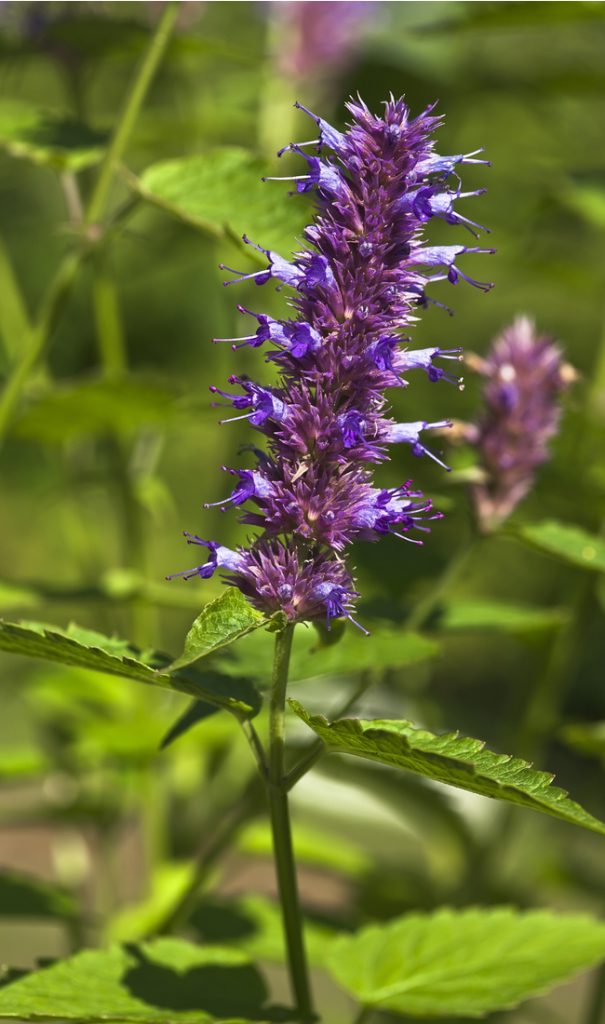
Apple Mint
Apple mint (Mentha suaveolens) produces blossoms from the middle of summer until fall. Similar to the other two species, the flowers grow on a spike that protrudes 1.5 to 4 inches into the air. The flowers of M. suaveolens surround the spike and are white or pink. The best way to differentiate this species from others is through the much taller stalks and larger leaves.
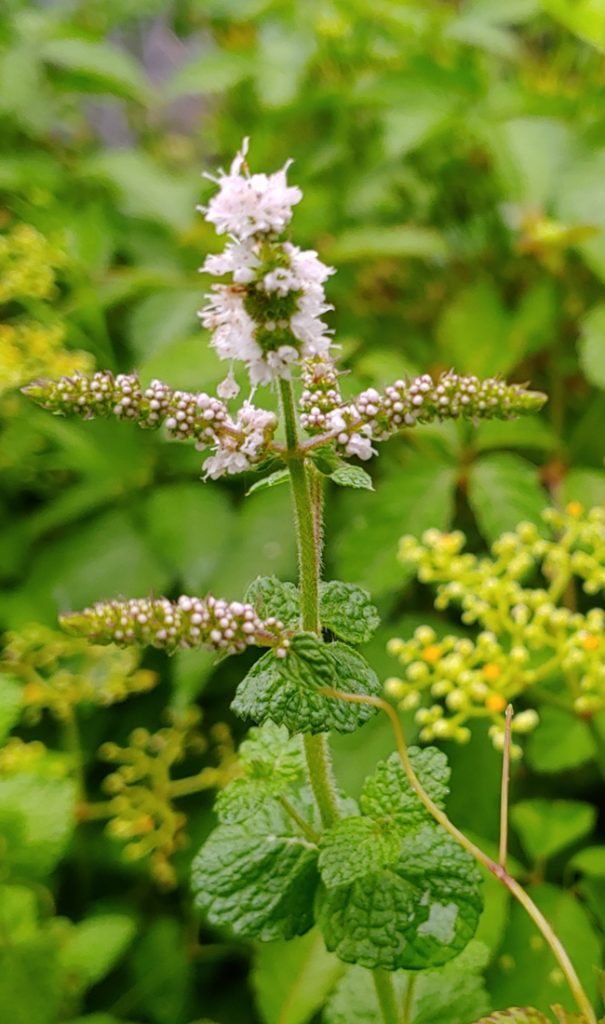
Purpose of the Flower
Most plants produce flowers to produce seeds. When pollen is transferred from the anther (male part) of a plant’s flower to the stigma (female part) of another plant’s flower, it fertilizes the flower and forms seeds.
Hybrid plants can be formed when two species are “cross-pollinated,” such as in the case of peppermint. This is a hybrid species that is a cross between water- and spearmint. Hybrids are unable to create healthy seeds, and such a plant is best propagated through rhizomes. Rhizomes are roots that spread away underground and form new shoots nearby.
Spreading via rhizomes is a very efficient way to propagate. This is often why a particular species is considered to be invasive.
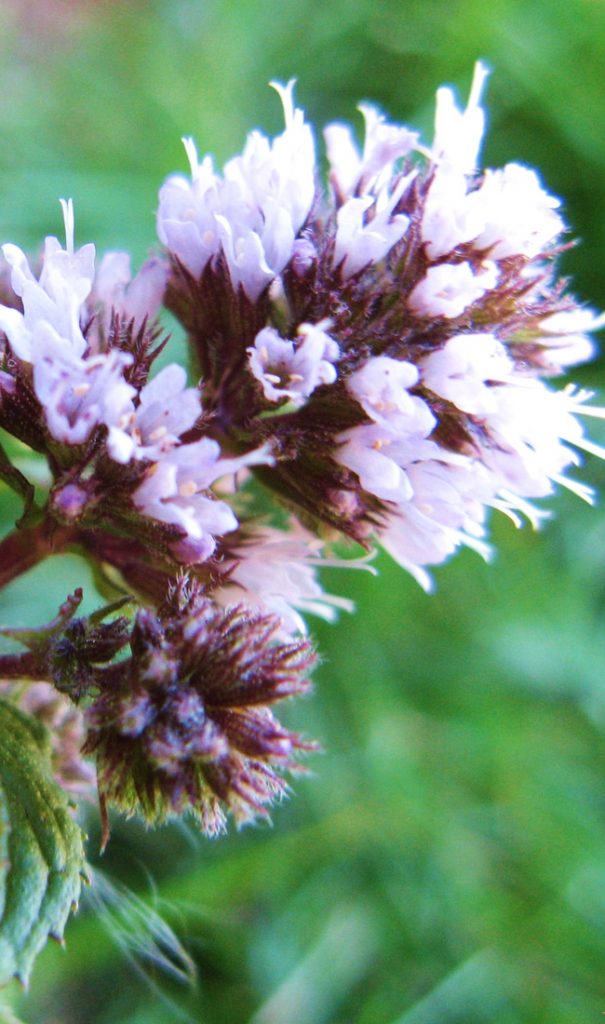
It Can Be Fun for a Season
To enjoy anything in the Mentha genus, you have to keep it in check. Sometimes, it can be very hard to remove the species from your garden, as it spreads and returns each year. Removing the buds before they open can help stop some of the spread. But even if you remove all of the visible greenery, the underground rhizomes still have the ability to send up new shoots.
If you have a hybrid species, then removing the blossoms almost becomes a necessity. If allowed to go to seed, the resulting growth will be a low-quality variety. You have to ask yourself at this point if it is worth growing this in your garden.
To avoid having low-quality plants in your flowerbeds, prune the buds as they appear. If you want to enjoy the flowers, let the plants bloom for just a short while and prune the stalks before any seeds are formed.
The cut-off growth doesn’t have to go to waste, as it is edible and tastes similar to the often-used leaves. Feel free to use the cuttings in your cooking for a subtle flavor and a burst of color.
If Mentha begins to take over parts of your garden you don’t want it to be in, you need to be proactive and pull out the plant with its roots. Make sure you remove the entire root ball.

Expert Recommendation: Grow It in a Pot
There is an easy way to contain your mint — grow it in a pot! It does well in a container, and this will easily prevent rhizomes from spreading all over your garden. Even more, if you keep the pot or pots far away from your garden, you don’t have to worry about any seeds that happen to be produced.
This is also a great way to have mint available throughout the winter. Simply move the pots into your home or greenhouse at the end of fall. This is perfect if you plan to cook with it.
Additionally, growing in pots will allow you to keep track of the individual species you are cultivating. If left to grow outside, they may intermingle and create hybrid species of their own.
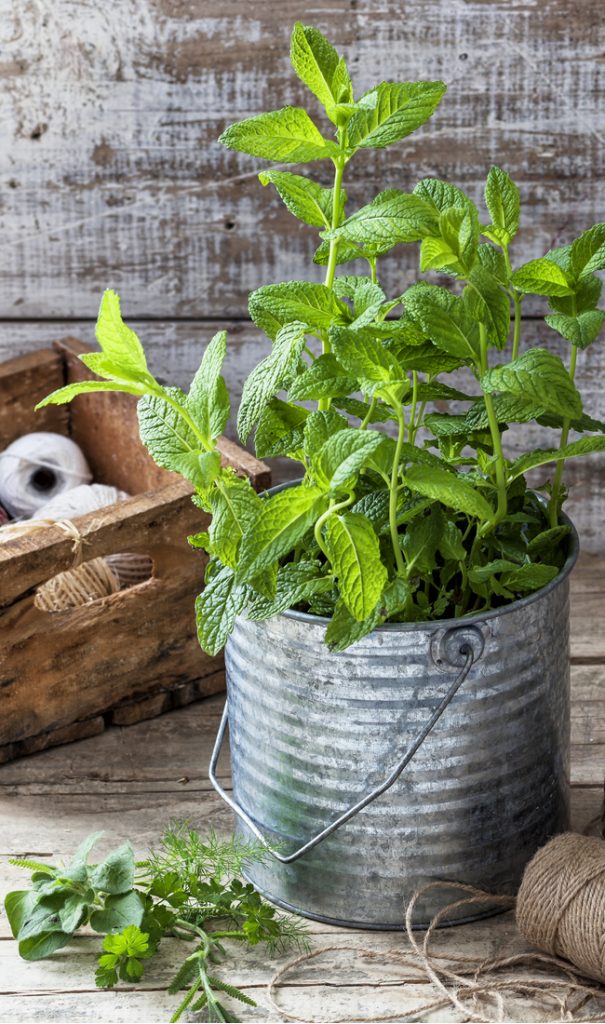
Conclusion
Once mint spreads in an area of your property, it is almost impossible to get rid of. You can avoid this with some preventative care:
- Trim the blossoms.
- Grow it in pots.
- Remove unwanted rhizomes.
Following these easy steps will allow you to enjoy your creation as it grows.

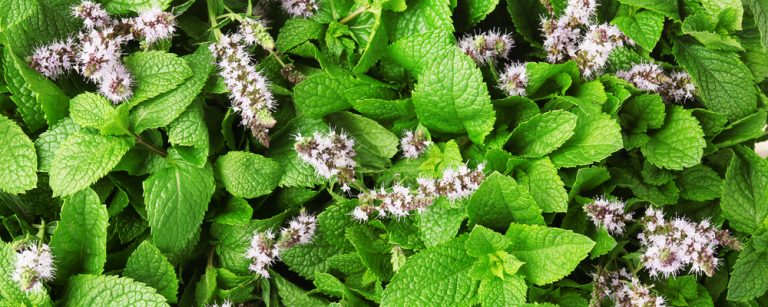
The article was very helpful. Last year I planted peppermint seeds but the blossoms didn’t look like they are peppermint. Do you know what this is? Photo attached.